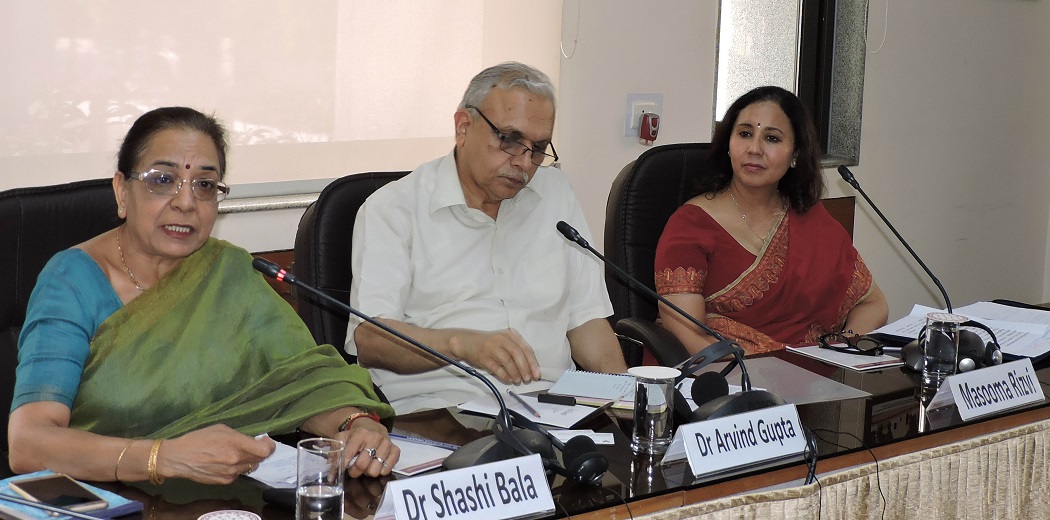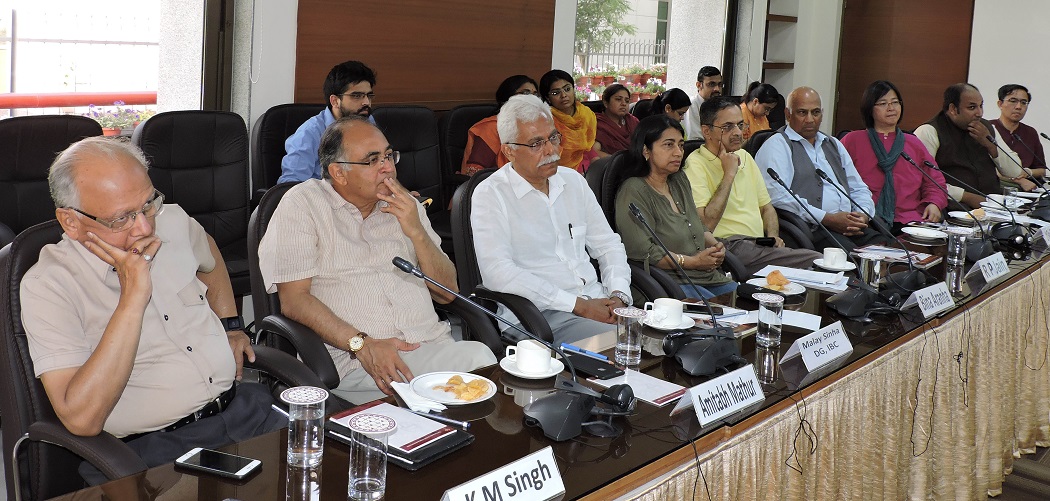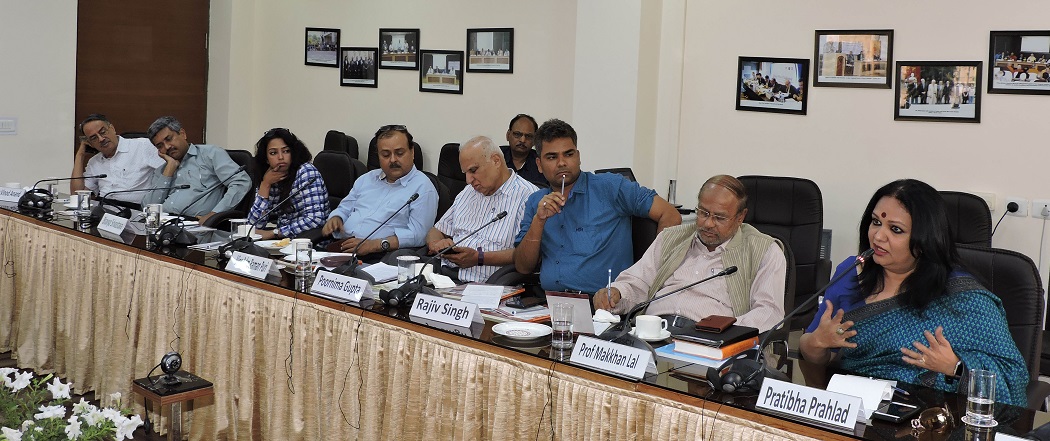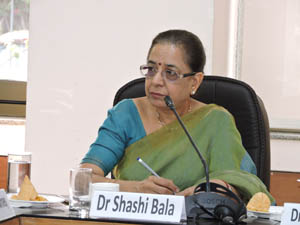On 5 April 2018, a panel discussion on India’s cultural linkages was organized at the Vivekananda International Foundation (VIF). The panelists were Dr. Shashi Bala, Dean, Centre for Indology, Bharatiya Vidya Bhavan and Ms. Masooma Rizvi, artist and conservationist. The discussion was chaired by Dr. Arvind Gupta, Director, VIF.
Dr. Bala spoke on ‘Ramayana in ASEAN Countries—A Cultural Link’ and Ms Rizvi spoke on ‘Buddhist Art and its Role in Cultural Unity’. Among the discussants were distinguished people such as Padma Shri Ms. Pratibha Prahlad, Mr. Malay Sinha, Lt. Gen. Ravi Shankar, Mr. K M Singh, Mr. Amitabh Mathur, Ms. Bina Aranha, Dr. Heero Hito, Dr. Christie Yu-Ling Chang, Dr. Frank Yun-Fu Tien, Prof. Makkhan Lal, Lt. Gen. Ravi Sawhney, Brig. Vinod Anand, Mr. Rajiv Singh, Ms. Bhavya Srivastava and others.

Dr. Bala spoke on how Ramayana travelled to the South-East Asian countries through traders and other travelers. She discussed the presence of Ramayana in each of these countries. She described how Ramayana stories are depicted in temple panels in Cambodia, how rivers and cities in the country are named after rivers and cities found in the Ramayana, and went on to explain the matter.
Cambodia is home to about 12,000 Sanskrit manuscripts. The Kakawin Ramayana (9th-10th Century CE) is the earliest written record from Indonesia regarding the Ramayana. It is written in Old Javanese. It is remarkable to see the fervor with which Ramayana is performed in Indonesia despite the fact that it is a Muslim pre-dominant country. For them, Ramayana is more of a cultural text than a religious text. There are differences between the Indian Ramayana and the Thai Ramayana. The latter has many unique stories which are additional and not to be found in the Valmiki Ramayana. Laos is probably the only country in the world where there is a statue of Valmiki from the 7th Century; while the Valmiki statue in Ellora (India) belongs to the 8th Century. Dr. Bala concluded by pointing out that for the people of the ASEAN countries, the Ramayana is the basis of moral values and a practical code of life.

Ms. Rizvi spoke on how art has a universal nature despite the fact that our ideas of what we view are culturally attuned. She tried to trace the commonalities between Buddhist art across the world, for instance, the differences and the similarities between the architectural patterns in Buddhist stupas in India and Pagodas in China and Japan. She also discussed about other common features such as the Wheel of Existence and the Mandala. Her central purpose was to highlight how art, especially Buddhist art, can be an instrument for promoting peace and understanding.
After the two presentations, the house was opened for discussion and various issues were discussed and debated intensely as to how can India’s connections and cultural linkages with other countries be studied from a strategic point of view? How to incorporate these histories into the mainstream curriculum? How do we make sense of the diversity within the Ramayana tradition both in India and abroad? How do we conceptualise the relationship between early Buddhism and Hinduism, given the circumstances of the birth of Buddhism and the fund of Indic commonalities as well as differences between the two? How do we make sense of the different paths that Buddhism traversed once it spread from India to the rest of Asia?
The discussion concluded by saying that we could talk about a kind of ‘shared heritage’ in India, whereby we recognise both differences and linkages between Hinduism and Buddhism. It was also pointed out that transcendence is the basic principle that unites all the Indic philosophies.








